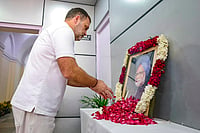Basant Kunwar, residing in a village in Udaipur, is the only earning member in her family with an ailing husband and four children. One of her daughters is in class 10 and has received the government pre-matric scholarship in her bank account. Basant said, “I have told my daughter to use the scholarship money for her studies. I will further motivate her to study as much as she wants to.” Information regarding the scholarship and support for opening a bank account, as well as, registering for the scholarship was received by her from Project Udaan.
IPE Global Limited, an international development consulting group, is working with the state government to implement the Udaan project through a combined approach that keeps girls in school by improving the coverage and delivery of the government pre-matric scholarships for girls in classes 9 and 10; improves their knowledge of and access to sexual and reproductive health; increases the basket of contraceptive choices, and changes social practices that perpetuate early marriage and adolescent pregnancy. The project is supported by the Children’s Investment Fund Foundation (CIFF), UK.

Sunita, from Bari block in Dholpur district of Rajasthan, always wanted to complete her studies and become self-dependent but one summer, when she was 15, she and her two-year elder sister were married off. One day, last year, she and her husband learnt about the pre-matric scholarship for secondary education from an Udaan functionary. Sunita expressed to her husband Sunil that she wanted to complete her studies and finally convinced him, and her in-laws to join back to school. Sunita said, “I am determined to have my first child only after I attain 20 years. I learnt in a session in school about the negative consequences of early pregnancy and contraceptive methods.” Sunita received this knowledge during an education session in her school, as a part of the Udaan project.
A human centred design approach was used to understand the adolescents’ perspective and use the insights to design and demonstrate interventions to effectively engage with adolescents on sexual and reproductive health (SRH). After a series of iterative explorations, the project team came up with four key potential interventions that are being piloted in Bari block of Dholpur district, which include, in-school SRH sessions; improving the adolescent friendly health clinics (Ujala clinics) by making them more welcoming to adolescents so as encourage them to have open discussions and ensuring quality of the counselling services; improving the helpline counselling experience, and; creating and marketing a unified Ujala brand that will raise the awareness of Ujala clinic and helpline services amongst adolescents.

Despite all these efforts, there will be some adolescents getting married early or are mothers already. Increasing the choices and access to reversible contraception options will help them delay the first pregnancy or contribute to healthy birth spacing. The project is therefore also supporting the state for increasing the uptake of intramuscular injectable contraceptive (popularly known as Antara). Prakashi from Kadecha village in Udaipur made an informed choice for herself after her second child was born. Nirma, an ASHA worker, would visit her home regularly during her pregnancy to guide her on maternal nutrition and care, she would also talk about ‘Antara’ among other options. Prakashi was convinced that this was the right choice for her as she saw the convenience in opting it for spacing.
Evidence shows that high levels of child undernutrition in the country can be attributed to the fact that a large number of children are born to adolescent mothers. Apart from nutrition-specific interventions, investments are required toward initiatives that lead to reduction in teenage pregnancies. This will not only help in improving the lives of adolescent girls but will also contribute in reducing child undernutrition in the country.





















